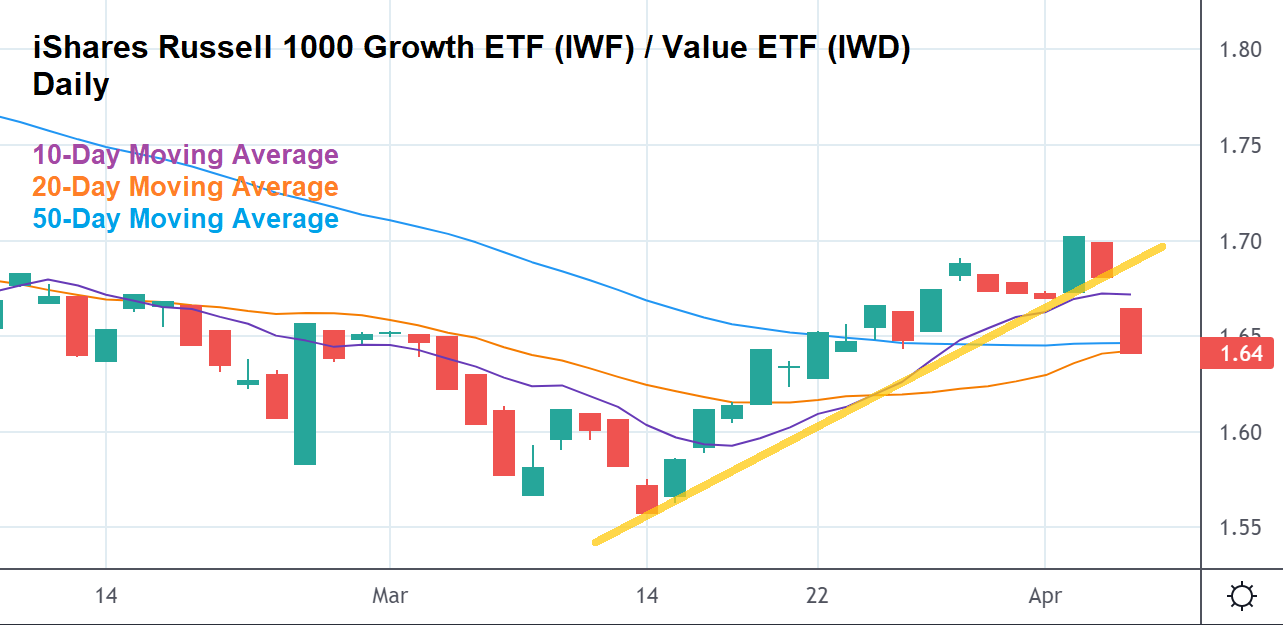Stocks sunk again this afternoon as investors digested a much-anticipated Fed minutes release. The Dow, S&P, and Nasdaq Composite all plunged while tech led the way lower.
Following the last FOMC meeting, Fed Chairman Jerome Powell announced a 25-basis point rate hike. But the most important revelation came by way of an updated rate hike schedule, which included 6 additional hikes this year.
Stocks rallied in response, as investors assumed that the Fed would be unable to actually hike rates that many times before bringing them lower again.
More recently, though, it looked like the Fed may hike rates no matter what happened with the market or economy. Inflation has crept significantly higher over the last year, and now that the West has sanctioned Russia, price increases on commodities threaten to spiral out of control.
This is because the main driver of soaring commodity prices these days is a lack of supply – something the Fed has no control over. Central banks can reduce demand via monetary tightening, which typically cools inflation when demand is red hot.
But when demand is higher than expected and supply is artificially constrained by sanctions, the Fed has little it can do. That might result in a more hawkish than expected stance from Powell & Co in 2022.
This afternoon’s minutes release shed some light on the Fed plans moving forward.
“Many participants noted that one or more 50 basis point increases in the target range could be appropriate at future meetings, particularly if inflation pressures remained elevated or intensified,” the minutes said. It’s also clear that the Fed expects to reduce its balance sheet by roughly $95 billion per month.
This did little to calm fears that arose yesterday, when Fed Gov. Lael Brainard spoke before the Minneapolis Fed.
“Currently, inflation is much too high and is subject to upside risks,” she said.
“The [FOMC] is prepared to take stronger action if indicators of inflation and inflation expectations indicate that such action is warranted.”
Brainard was formerly one of the Fed’s biggest doves. Over the last few weeks, though, she’s completely switched sides, joining the likes of St. Louis Fed President Jim Bullard, the Fed’s “hawkiest” hawk.
“The [FOMC] will continue tightening monetary policy methodically through a series of interest rate increases and by starting to reduce the balance sheet at a rapid pace as soon as our May meeting,” Brainard added.
Should rates continue to rise methodically, growth stocks stand to get hurt the most. That’s been reflected in the “tech wreck” of the last two days.
And these shares should continue to fall opposite companies that are more focused on bringing in positive cashflows (value stocks) than pure growth.

In fact, the relationship between growth and value breached a key threshold this morning. The iShares Russell 1000 Growth ETF (NYSE:IWF), when divided by the iShares Russell 1000 Value ETF (NYSE: IWD), shows the over/underperformance of growth stocks relative to value stocks.
Since mid-March, growth beat value. Today, however, growth plunged relative to value. The chart showed a bearish breakout this morning below its bullish trend (yellow trendline) and three important moving averages – the 10-day, 20-day, and 50-day.
The last time all three moving averages were crossed was back in January, when the Nasdaq Composite plunged opposite a rising Dow.
So, over the next few weeks, be wary of buying any tech dips. Value is setting up to outperform growth in both the short-term (10, 20-day moving averages) and the long-term (50-day moving average). Being mindful of this could give traders a significant edge as they navigate the market in April, which is setting up to be yet another highly volatile month amid significant macroeconomic uncertainty.








